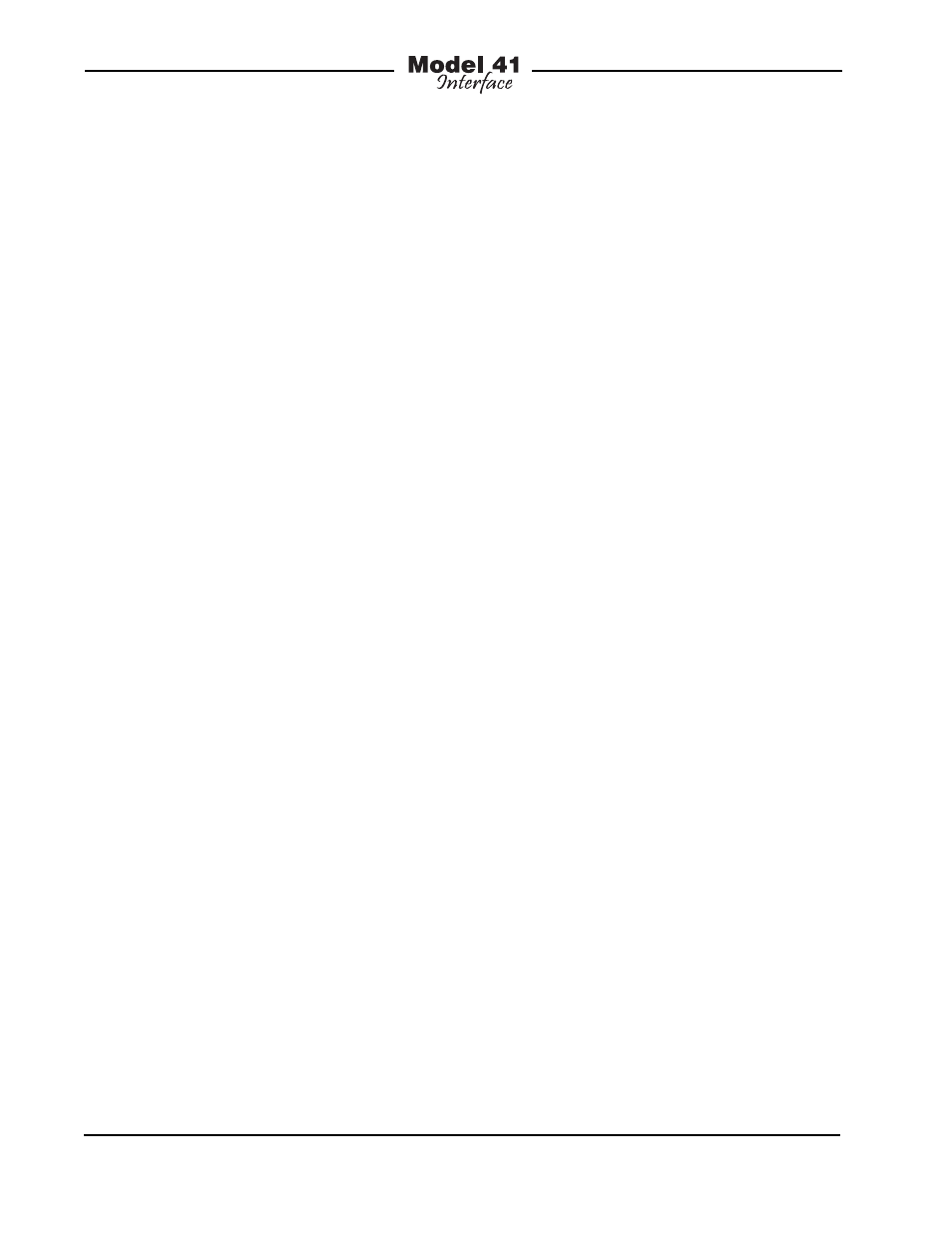Maintaining correct input signal levels, Maintaining correct ifb circuit current draw – Studio Technologies 41 2004 User Manual
Page 15

Issue 1, October 2004
Model 41 User Guide
Page 16
Studio Technologies, Inc.
Maintaining Correct Input
Signal Levels
The Model 41’s four 2-channel audio
inputs are designed for nominal signal
levels of +4 dBu. Applying signal levels
significantly lower than +4 dBu will
reduce the signal-to-noise ratio (raising
the perceived noise floor) and can pre-
vent the connected user devices from
operating optimally. Applying signal levels
significantly higher than +4 dBu will re-
duce the headroom and greatly increase
the chance of reaching audio “clipping.”
Obviously, these cautions are not unique
to the Model 41, but apply to most audio
equipment. The front-panel level meters
provide an easy means of confirming that
the Model 41 is being presented with the
correct audio levels.
To confirm correct IFB circuit operation
at locations away from where the Model
41 is installed, it’s possible to use the
Model 72 Level Meter/Interface, also avail-
able from Studio Technologies. The Model
72 is a compact, portable device that
plugs directly into IFB or intercom circuits
and provides two useful functions. Two
5-segment LED meters display the au-
dio levels present on pins 2 and 3 of the
connected circuit. In addition, two “dry”
line-level audio outputs are provided.
Complete information on the Model 72
is available on the Studio Technologies
website.
Maintaining Correct IFB
Circuit Current Draw
Each of the four IFB circuits is designed
to provide up to 200 milliamperes of DC
current. By design, the IFB circuits are
protected so that an overload condition, or
even a complete short circuit, should not
cause damage. Exceeding 200 milliam-
peres will cause the protection circuitry to
come into play. An overload condition will
cause the output voltage to shut off con-
tinually or intermittently. The exact action
will depend on the specific overload con-
dition that is present. In general, the more
extreme the overload condition, the soon-
er normal operation will cease. Restoring
the output load to be within the rated 200
milliamperes will allow the output to again
operate normally. A few seconds may be
required from the time an overload condi-
tion is removed to when normal operation
will again take place. Please don’t test
the Model 41’s ability to sustain frequent
overload or short-circuit conditions! The
long-term reliability of the unit can be im-
pacted by the stress caused by these fault
conditions.
The four status LEDs make it simple to
know if an excessive load, or a short cir-
cuit, is being placed on one or more of the
IFB circuits. The LEDs provide a direct in-
dication of the IFB circuits’ DC output volt-
age. Each output voltage is directly related
to the amount of current being drawn, as
well as indicating when its output circuit
has entered protection mode and essen-
tially shut down. During normal operation
the DC level on pin 2 of an output circuit
will range from approximately 28 to 30
volts. An LED will begin to flash on and off
if the level falls below approximately 24
volts DC. This will occur when the current
draw is greater than nominally 200 mil-
liamperes. A complete short circuit condi-
tion will initially draw much more than 200
milliamperes and then change (due to
protection mode being entered) to being
only a few milliamperes. Even in protec-
tion mode, the output will remain much
less than 24 volts.
